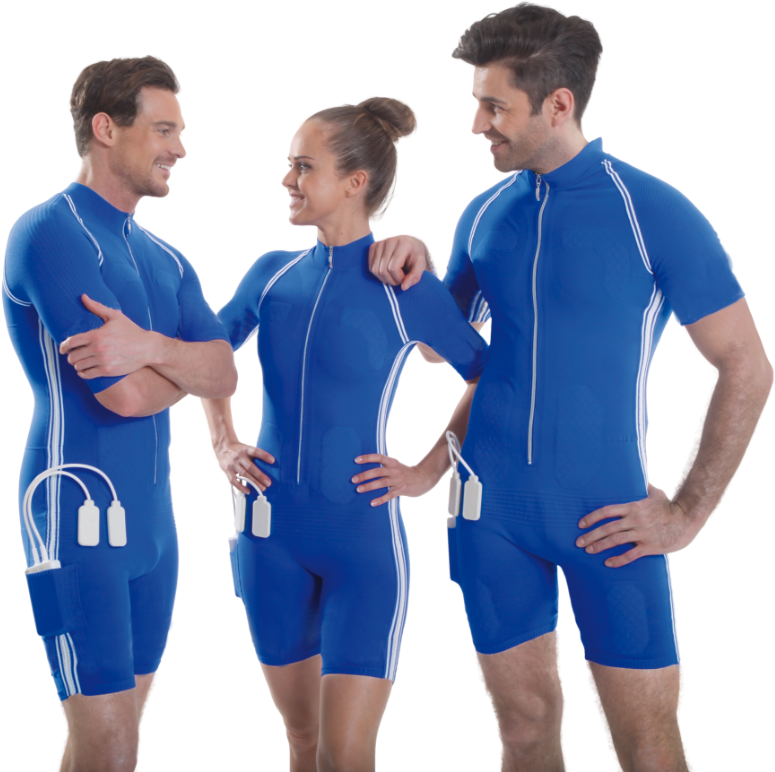EMS Training for back pain (lumbar spine) and neck pain (cervical spine)
The elimination of excruciating pain (cervical and lumbar syndromes) is certainly one of the main objectives to be set out at the beginning of EMS training. EasyMotionSkin is ideally suited to achieving this goal in the shortest time possible due to its unique arrangement of electrodes. This is done by strategically building up the low-lying intervertebral muscles. Targeted training stabilises the spine, repositions the vertebrae in line with each other and thus leads to a decrease in mechanical irritation of the intervertebral foramen (foramina intervertebralie), which is where the segmental nerve fibres originate.
Whole body EMS training for back pain
(Boeckh-Behrens, W.-U., Grützmacher, N., Sebelefsky, J.; Universität Bayreuth, 2002)
Goal of the study
The objective of the study was to find out the effects of complex EMS training on people suffering from back pain.
Results
88.7% of subjects noticed a reduction in back pain, 38.8% of which experienced a strong reduction. 41.9% of subjects reported a slight improvement to their back pain. The frequency and intensity of pain also reduced significantly during the training period. EMS training also caused the following general effects: 61% reported an improvement to their general pain levels, in 75% of subjects their mood improved, 69% reported increased vitality, 57% of men and 85% of women noticed improved body stability, 50% of subjects could see positive changes to body shape and 75% felt more relaxed after training.
Summary
Whole body EMS training combats back pain – an extremely widespread condition – in a very effective way. The electrical current obviously also effects deep muscles which are difficult to reach using conventional treatments. Specialist whole body EMS training is a time-saving, very effective all-round training regimen which achieves positive, wide-reaching health effects. It achieves both therapeutic and preventative goals.
Related Knowledge Base Posts
- Releasing muscle tension and contractures
- Progressive muscular dystrophy
- EMS Training with obstructive pulmonary disease (COPD)

